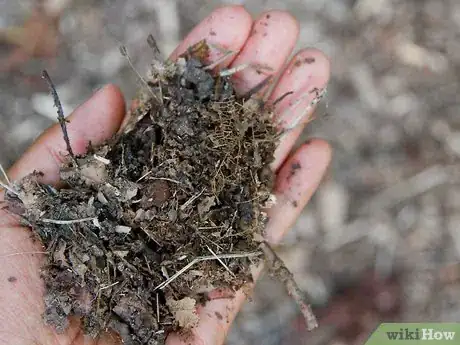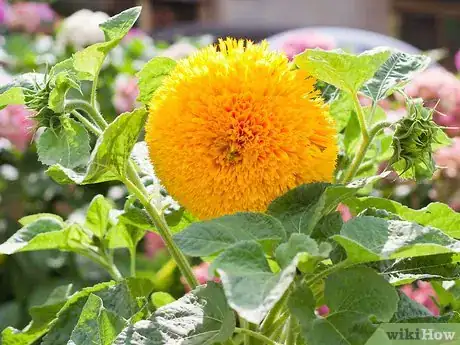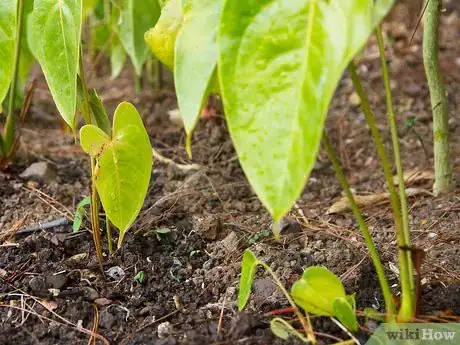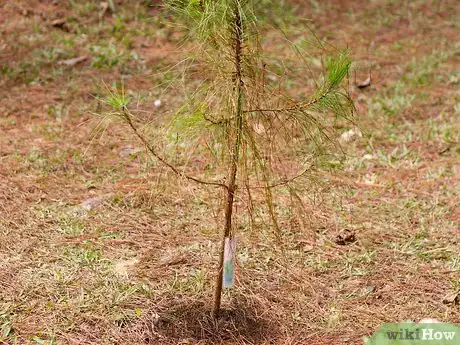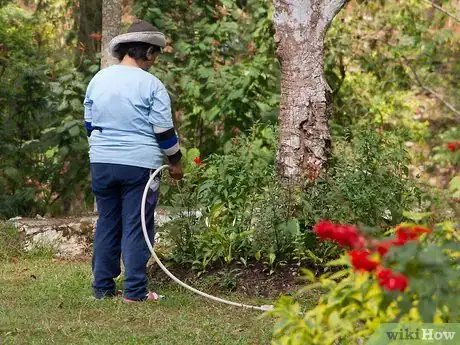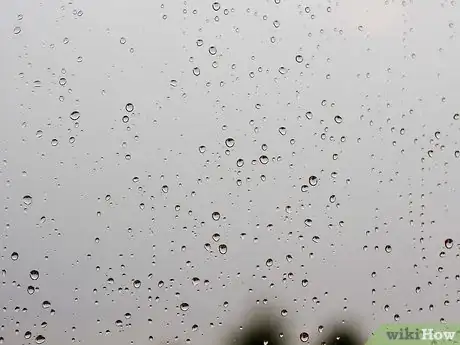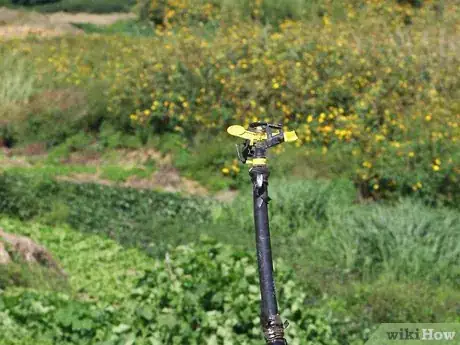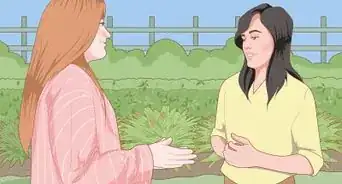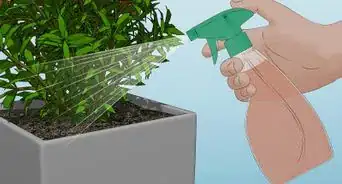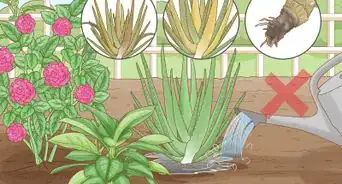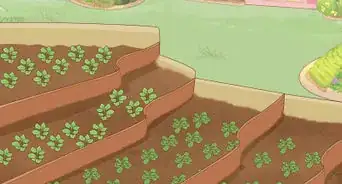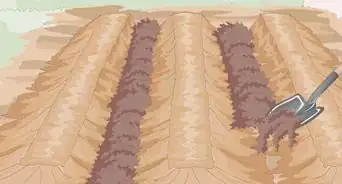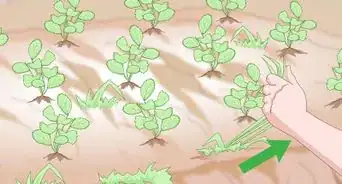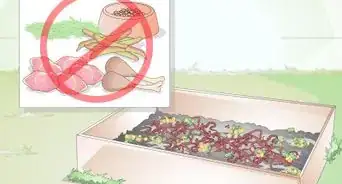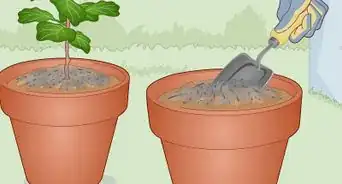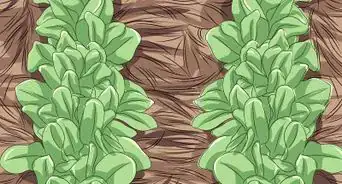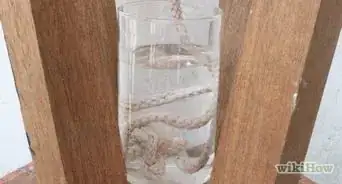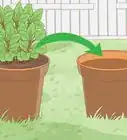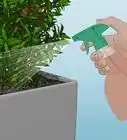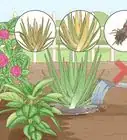X
This article was co-authored by Lindsey Swett. Lindsey Swett is a Plant Specialist and the Owner of Niche Plant Shop in Boston, Massachusetts. She has over a decade of experience working in several plant settings, including golf courses, public parks, and commercial garden centers. Her focus now is on helping plant owners care for their indoor plants. Lindsey holds a Master of Landscape Architecture from The University of Michigan.
This article has been viewed 43,400 times.
So it now came to gardening! Want the most from your plants? To thrive, any plant needs the right amount and kind of sun, water, heat and soil. Watering your plants is key to keeping them healthy.
Steps
Part 1
Part 1 of 2:
Knowing What Your Plant Needs
-
1Check soil carefully. There are two types of soil:[1]
- Dry soil - It can be identified if the soil is sandy and has cracks in it.
- Clay soil - If the soil is sticky and muddy then it is clay soil.
-
2Look at the type of plant. Is the plant younger, or a newly grown, or an older one. Younger plants can be at most 4-5 years of age. Then they are categorized as older plants.Advertisement
-
3Research how much water your plants need. This varies from species to species, so look online or in gardening books.
Advertisement
Part 2
Part 2 of 2:
Watering the Plants
-
1See if the soil is wet. If the plants are grown in dry soil, it would need more amount of water and clay soil obviously needs less amount of water as it has more moisture.
-
2Give appropriate water. Remember that different kinds and ages of plants have different requirements. Younger ones typically need less water than older ones, while newly planted ones need only small amount of water.
-
3Get the timing right.The best time of day to water is always in the morning. This gives the plant time to absorb the water and get ready to handle heat, cold, or just the energy it takes to produce chlorophyll, grow, and move nutrients around.If you water in the late afternoon or evening, the problem is that the plant is now wet and the air temperature is cool. Those are the best conditions for mildews, molds, and all kinds of disease problems. Keep life simple, water in the morning.
- Watering in the middle of a very hot day isn't a good idea either, since the water can evaporate before it does any good, and can actually heat up too much and damage your plants.
-
4Concentrate watering on the roots. Roots require more water than leaves. In fact, roots only require water. As said earlier wet leaves will lead to diseases.[2]
-
5Water slowly. Watering fast is like giving just 20% of water to plants to rest all waste. Water slower. Doing this water will remain around roots as a result it will get more water. Watering fast may generate a great flow, causing erosion and leading to most of the water flowing away anyway.
-
6Use a rain gauge. It measures how many centimeter the rain falls in that area so you would be able to give plants the desired quantity of water.
-
7Use a sprinkler in your garden. Sprinklers are very effective. They give water to plants at the proper time, and you don't have to worry about doing it with a hose or watering can. It is similar to drop-by-drop method (irrigation method used in farming).
-
8Micro-drip irrigation systems can be installed to deliver water directly to where the plants can use it. Applied slowly, water gradually soaks to the roots, rather than running off or evaporating. It will save you time and reduce the amount of water that's wasted.[3]
-
9Use waste water from preparing vegetables and washing up as well as that from baths and showers. Don't use water that contains bleach or powerful household cleaning products, which could damage plants.[4]
Advertisement
Community Q&A
-
QuestionI have a lot of shrub type plants and crepe myrtles - too many for a soaker hose, so I bought oscillating sprinklers. Would this type of sprinkler serve the purpose as well?
 Susan ButlerCommunity AnswerYes, as long as you feed your plants and mulch your garden, they'll be thankful for a drink from any type of sprinkler.
Susan ButlerCommunity AnswerYes, as long as you feed your plants and mulch your garden, they'll be thankful for a drink from any type of sprinkler. -
QuestionCan I collect rainwater to water my plants?
 Community AnswerYes! Rainwater works as well as any other type of water. You can build a collection barrel, construct a collector out of a tarp, or other means of gathering.
Community AnswerYes! Rainwater works as well as any other type of water. You can build a collection barrel, construct a collector out of a tarp, or other means of gathering.
Advertisement
Warnings
- These methods are for plants in your house, not for agriculture. Agriculture involves different considerations.⧼thumbs_response⧽
Advertisement
References
About This Article
Advertisement
